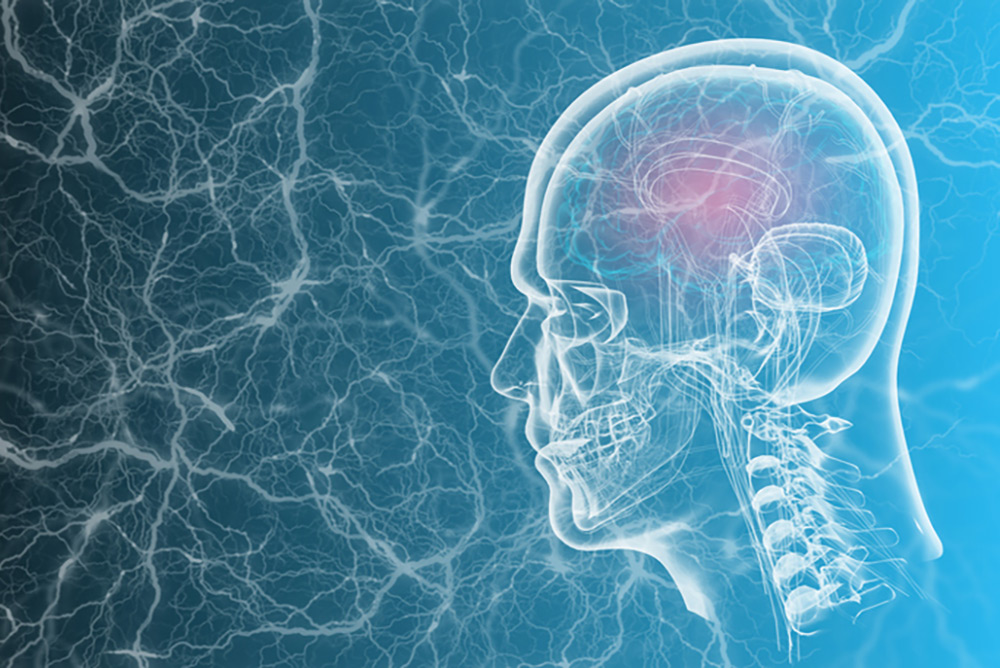
iStock
By Mary Carpenter
FOCUSED ULTRASOUND (FU)—for treating conditions from essential tremor and breast cancer to depression and OCD—works in the same way a magnifying glass focuses beams of sunlight to cause burning in a leaf or other material, according to the Focused Ultrasound Foundation. While FU is noninvasive—causing no effect where individual beams pass through tissue—“the convergence of the multiple beams modifies or destroys tissues deep in the body.”
In recent news, firing hundreds of ultrasound waves into the brain to ease the cravings of addictions is under study at West Virginia University’s Rockefeller Neuroscience Institute, writes David Ovalle in the Washington Post. At high intensities, focused ultrasound beams burn away tissue; while lower intensity ultrasound used in neuromodulation can stimulate or restore abnormally functioning tissue and may also help the brain better absorb Alzheimer’s medications.
“It’s basically doing brain surgery without the surgery,” Rockefeller Neuroscience Institute Director Ali Resai told the Post. Since first winning FDA approval in 2004 for use on uterine fibroids, FU is now the treatment of choice for nine conditions in the U.S. and has 32 uses worldwide—with 180 additional possibilities now in research and development— versus only three uses under study 10 years ago.
Earlier uses of energy to stimulate the brain include ECT (electroshock treatment) and TES and TMS (transcranial electrical and magnetic brain stimulation). In addition, DBS (deep brain stimulation) involves implantation of a neurostimulator that delivers electrical pulses into the brain and has helped patients with Essential Tremor (ET), Parkinson’s disease and OCD.
The tremors of both conditions are the most familiar use of FU, which—compared with the energy treatments above—has “superior spatial resolution and penetration depth,” according to a Frontiers summary article. Called MRI-guided focused ultrasound (MRgFUS), the procedure employs MRI scans to pinpoint intended areas of treatment. For ET, the most common movement disorder, focused ultrasound thalamotomy uses heat from converging high-intensity sound waves to destroy a portion of the thalamus. For more than 50 years, thalamotomies using various techniques have treated both kinds of tremors—the rhythmic trembling of Parkinson’s Disease (PD) that occurs at rest and essential tremor that appears during movement.
Essential Tremor affects about one percent of the population, or an estimated ten million Americans, with Katharine Hepburn a famous sufferer. Handwriting by someone with ET tends to be large and tremulous—rather than slow and very small as in PD. And while dopamine depletion, visible on brain scans, occurs in Parkinson’s Disease, ET is usually genetic — linked to family history. For sufferers of both, the tremors can be made worse by anxiety, stress, fatigue, physical exertion and fever.
ET can cause simply the embarrassment of a wobbly teacup but people with more debilitating tremors seek treatment. Medications, such as the beta-blocker propranolol, reduce tremor amplitude in 50 to 70% of the population. But for patients with symptoms that don’t benefit or who cannot tolerate the medications, invasive surgery has been the only alternative.
For opioid addiction treatment at the West Virginia institute, a patient lies inside an MRI machine wearing high-tech goggles that show images of heroin residue on tinfoil, and pain pills scattered on a table, writes Ovalle. Seeing these images can be unbearable, even for patients who are taking medications like buprenorphine to reduce cravings. An alternative method, in research at University of Virginia (UVA), targets cocaine users. Said director of the UVA Center for Addiction Nassima Ait-Daoud Tiouririne, “There is no medication for cocaine.”
Treatment of major depressive disorder is the focus of FU research at the University of Utah with the low-intensity ultrasound device DIADEM that does not require MRI guidance—with trials expected soon on food addiction, PSTD and Alzheimer’s disease. Many physicians warn, however, that using ultrasound to treat ailments in the brain is in very early stages, would likely need to be used along with other therapies and could take years to win FDA approval.
I have mild essential tremor, not serious enough even for medication let alone more intense treatment. But I did have an experience with focused beams of energy, in this case, sunshine—not medical but accidental. As a teenager on a family ski vacation, I played hooky from skiing to sit on a sunny balcony with a friend, using a hotel quilt for warmth. After removing his very thick eyeglasses, by accident he positioned them perfectly to focus sunbeams and start a small fire in the quilt. Later, my father called to discuss the large hotel bill that itemized a burned quilt —though, to my relief, he didn’t ask me about why I skipped skiing.
—Mary Carpenter regularly reports on topical subjects in health and medicine.

